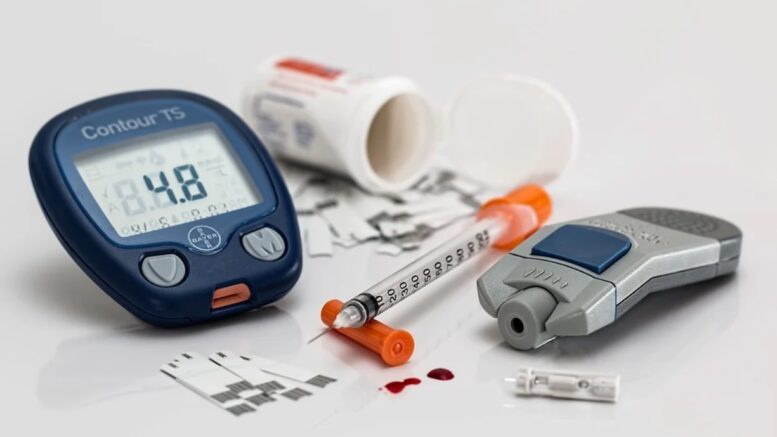Living with type 2 diabetes can be a daunting responsibility for many people. Still, by understanding the causes, symptoms, and latest treatments for this condition, you will gain an insight into what is needed to manage it effectively. Everyone should be aware of potential risk factors associated with type 2 diabetes so that they can take steps towards prevention or early intervention to minimize their chances of developing the disease.
Being informed about potential treatments available also gives those already who have type 2 diabetes a greater chance at successfully managing their illness. In this article, we will explore all aspects of type 2 diabetes so that you can access the most up-to-date information on the condition.
Overview of Type 2 Diabetes
Type 2 diabetes, or adult-onset diabetes, is a chronic condition affecting how your body processes blood sugar (glucose). This type of diabetes occurs when your body cannot use insulin properly. Insulin is a hormone the pancreas produces that helps regulate blood sugar levels. Unfortunately, as the disease progresses, the pancreas may become less efficient at producing insulin, leading to higher glucose levels in the bloodstream.
Type 2 diabetes can lead to severe complications, such as heart disease, kidney damage, and nerve damage. Although there is no cure for diabetes, it can be managed through lifestyle changes and medication. A healthy diet, regular physical activity, and a healthy weight can all help control blood sugar levels and reduce the risk of complications associated with type 2 diabetes. Buy Rybelsus online and consult a doctor to discuss the best treatment options.
What are the Causes of Type 2 Diabetes
Type 2 diabetes is a multifactorial disease, meaning a combination of genetic and environmental factors causes it. Some individuals may have a genetic predisposition to developing the condition, while others may develop it due to poor lifestyle choices. Some common risk factors for type 2 diabetes include:
- Family history of diabetes
- Being overweight or obese
- Lack of physical activity
- Unhealthy diet high in processed foods and sugar
- Age (risk increases with age)
- Ethnicity (higher risk among African Americans, Native Americans, and Hispanics)
Additionally, certain medical conditions such as polycystic ovary syndrome (PCOS) and gestational diabetes during pregnancy can also increase the likelihood of developing type 2 diabetes.
Common Symptoms of Type 2 Diabetes
Type 2 diabetes is a chronic condition affecting millions of people worldwide. Individuals with this disease produce insulin, but their bodies cannot use it effectively. Symptoms of Type 2 diabetes generally develop gradually and can often go unnoticed. However, some common symptoms include frequent urination, excessive thirst, fatigue, blurry vision, and unexplained weight loss.
If left untreated, Type 2 diabetes can result in serious complications such as nerve damage, kidney damage, and cardiovascular disease. Therefore, it is essential to be aware of these symptoms and seek medical care as soon as possible to manage this condition.
The Latest Treatments and Management Strategies for Type 2 Diabetes 2023
The treatment for type 2 diabetes has evolved significantly over the years, with new and improved options constantly being developed. The primary goal of treatment is to keep blood sugar levels within a target range to prevent long-term complications. Some common treatment strategies for type 2 diabetes include:
- Medications: There are several classes of medications available to help manage blood sugar levels, including metformin, sulfonylureas, thiazolidinediones, and more.
- Insulin therapy: Some individuals with type 2 diabetes may require insulin injections to control their blood sugar levels.
- Blood sugar monitoring: It is crucial to regularly monitor blood sugar levels to ensure they are within the target range.
In addition to these treatment options, new technological advancements have led to the development of continuous glucose monitoring systems and insulin pumps, making diabetes management more manageable and convenient for individuals with type 2 diabetes.
Risks associated with Undiagnosed or Untreated Type 2 Diabetes
Undiagnosed or untreated Type 2 Diabetes can have alarming and potentially life-altering risks for those affected. The condition can cause nerve damage, kidney disease, and vision problems, to name a few. In more severe cases, it can even lead to amputation or heart disease, significantly impacting a person’s quality of life.
Without proper treatment, blood sugar levels remain unregulated and can cause lasting damage to the body. It is crucial to understand the risks associated with undiagnosed or untreated Type 2 Diabetes and seek medical attention immediately upon realizing symptoms. With the proper diagnosis and treatment, those affected can take control of their health and mitigate any potential risks associated with the condition.
Resources to Learn More about Managing and Living with Type 2 Diabetes
Living with Type 2 diabetes can be challenging, but it is essential to remember that there are resources available to help manage this condition. If you or a loved one has been diagnosed with Type 2 diabetes, there are various avenues you can take to learn more about it. For instance, you can consult with a primary care physician, endocrinologist, or certified diabetes educator.
Additionally, numerous books, websites, and educational materials provide valuable information on the topic. These resources can help you gain a better understanding of the condition, cope with the challenges of managing it, and ultimately improve your overall quality of life. By taking advantage of these resources and engaging with healthcare professionals, you can take proactive steps to manage your Type 2 diabetes and live a healthier, more fulfilling life.
